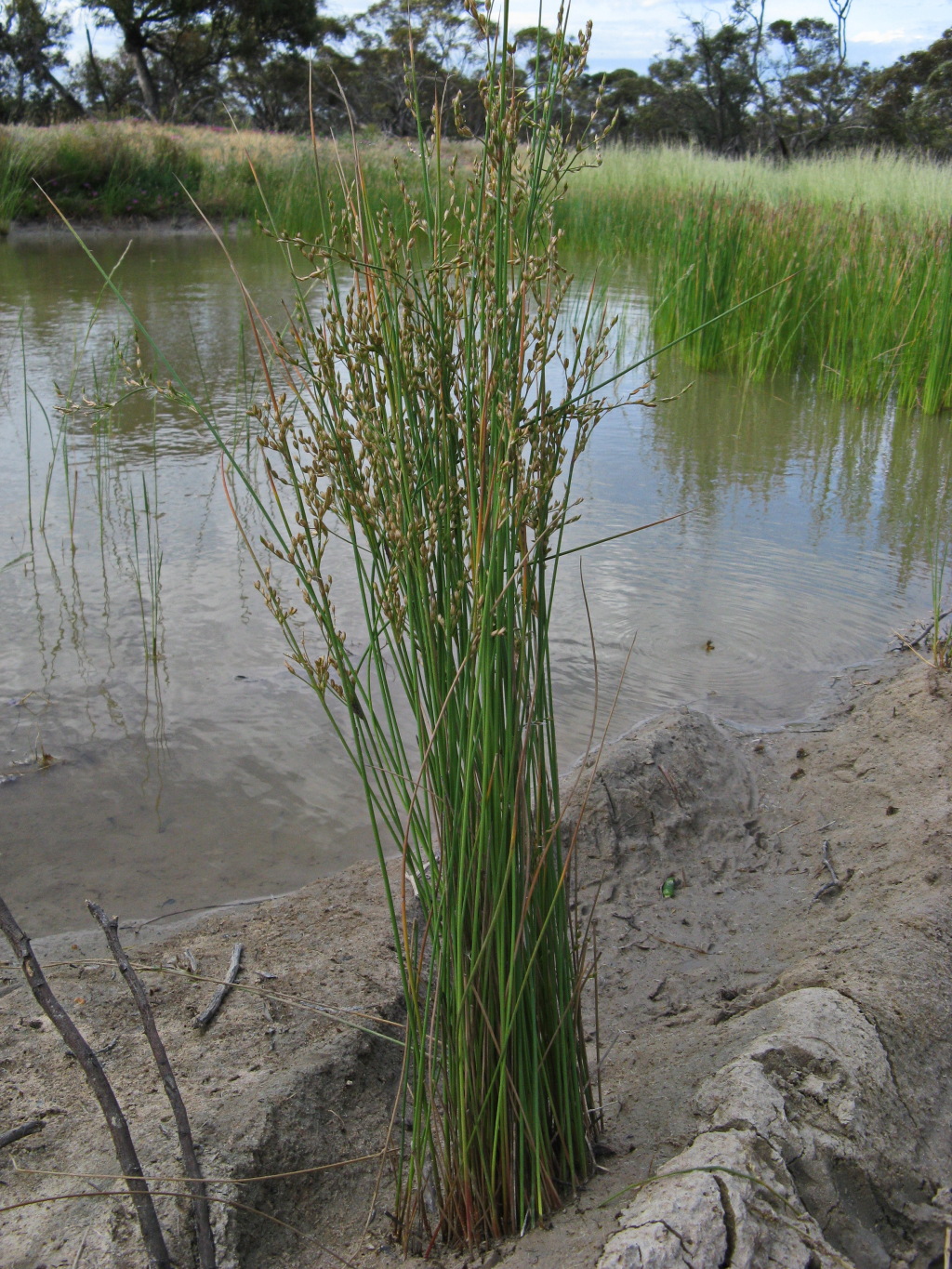Juncus radula
Buchenau Hoary RushTufted perennial with horizontal or ascending rhizomes. Cataphylls tight or loose, pale to medium brown or pale pinkish-brown towards the base, to c. 13 cm long. Culms erect, ± minutely scabrous, dull green to blue-green, 20–60 cm high and 0.5–2.3 mm diam.; striations 12–30, strongly raised and easily counted; pith continuous and cobwebby; stomates superficial. Inflorescence open, flowers evenly scattered (rarely congested) on erect or slightly curved, minutely scabrous branches; primary bract minutely scabrous, continuous with culm, to c. 30 cm long; prophylls present. Tepals ± minutely scabrous on the green or brown tinged midrib, margins translucent or tinged brown, later becoming stamineous, (3.0–)3.3–4.5 mm long; stamens 6 (rarely 3), anthers 0.6–1.0 mm long. Capsules stramineous, with a ± darker obtuse apex, shorter than, equal to, or rarely longer than the tepals, 2.5–4.0 mm long. Flowers mostly Oct.–Dec., seeds shed mostly Nov.–Feb.
LoM, MuM, Wim, GleP, VVP, VRiv, MuF, GipP, OtP, Gold, CVU, GGr, DunT, NIS, HSF. Also WA, SA, Qld, NSW. In low-rainfall areas, occuring in depressions and along seasonal drainage lines in a range of vegetation communities.
Juncus radula resembles J. remotiflorus and open-inflorescence forms of J. subsecundus and J. flavidus, but differs from these species in the continuous cobwebby pith, culm striations and minutely scabrous upper part of the culms and primary bracts. Known to hybridize with J. subsecundus.
Albrecht, D.E. (1994). Juncus. In: Walsh, N.G.; Entwisle, T.J., Flora of Victoria Vol. 2, Ferns and Allied Plants, Conifers and Monocotyledons, pp. 197–233. Inkata Press, Melbourne.
 Spinning
Spinning


